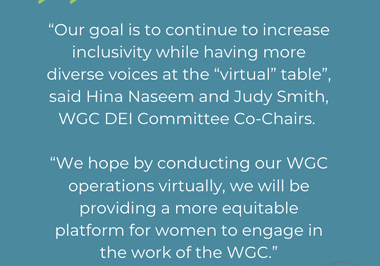BEFORE THEY GIVE UP, SAYS JULIE LENZER KIRK,
SUCCESSFUL ENTREPRENEURS LEARN TO SHIFT COURSE.
INTERVIEW BY Martha Thomas PORTRAIT BY Meredith Tankersly
Julie Lenzer Kirk is the Executive Director of the Howard County-based Maryland Center for Entrepreneurship. She founded her first company, Applied Creative Technologies, Inc. an IT solutions firm, in 1995, and sold it 10 years later. She worked as an instructor  with the ACTiVATE® program at the University of Maryland Baltimore County, named “Best Specialty Entrepreneurship Program” by the US Association for Small Business and Entrepreneurship, and has served as an adjunct professor of Innovation and Technology Entrepreneurship at UMBC. In 2010, Lenzer Kirk co-founded the Path Forward Center for Innovation and Entrepreneurship, a nonprofit that helps expand opportunities for women entrepreneurs.
with the ACTiVATE® program at the University of Maryland Baltimore County, named “Best Specialty Entrepreneurship Program” by the US Association for Small Business and Entrepreneurship, and has served as an adjunct professor of Innovation and Technology Entrepreneurship at UMBC. In 2010, Lenzer Kirk co-founded the Path Forward Center for Innovation and Entrepreneurship, a nonprofit that helps expand opportunities for women entrepreneurs.
Q. What is the definition of an entrepreneur?
An entrepreneur is someone who not only has an idea, but actually executes it. Otherwise there are a billion potential millionaires out there.
For example, I like to read, and I read fast. Years ago, I said rather than carry all these books around when I travel internationally, wouldn’t it be great to have all my books on a tablet, like 5 or 10 books at a time on my cool tablet? Well, I didn’t invent the Kindle.
Q. Is an entrepreneur necessarily a risk taker?
It’s a myth that entrepreneurs are huge risk takers. We’re calculated risk takers. I jumped out of an airplane once, but it was a calculated risk because I was attached to someone who knew what they were doing.
Q. What’s the first step?
When I ask if they’ve done their market research, would-be entrepreneurs point to all their Google research. But what they really need to be doing is talking to potential customers. If you aren’t talking to customers, you’re missing the opportunity to craft something the market actually wants to pay for. I meet a lot of entrepreneurs who won’t tell you their idea because they’re afraid someone will steal it. I tell them the idea is important, but what’s more important is the execution; a lot of people have the same idea, but not everyone follows through.
Q. Before you give up, figure out if you can pivot. Shifting what you are doing in response to the market is a crucial skill. Ask yourself, do I need to look at the market in a different way, tweak my service? If you see something isn’t going to work, you can move on to the next thing. Do a gut check about how far you’re really willing to take this. This is also where having a board of advisers is really helpful.
Q. What will that board do?
Entrepreneurship involves getting to know yourself: what you do well, what you like to do and what you aren’t so good at. The board should fill in the gaps. I recommend someone with a legal, and a financial background, someone with the industry background, and it’s also helpful to have an entrepreneur who has done something similar to what you want to do.
Q. How do you find these people? Are they friends? And are they willing to consult for free?
You have to be careful with friends – they might not tell you your baby’s ugly. You’d be surprised at how many folks, especially for start-ups, are willing to mentor for free. It’s important to set down expectations when asking someone to be on an advisory board. Say, I’d like to email you from time to time; we’ll have conference calls once a quarter. If you’re specific about what you’re asking for and how much time it’s going to take, if you’re really passionate about what you’re doing and you can tell a story that gets them passionate, they’re willing to help.
Q. Has the startup rage shifted from something you believe in to something you can potentially sell to Google or Coca Cola?
I see both sides. It’s good to know what you want to do with a company. I would have made some different decisions if I’d known I was going to sell my company at the end, and that might have increased its value.
A lot of entrepreneurs have a lot of ideas, and get a little attention deficit disorder (ADD). The type of entrepreneur who can build something isn’t necessarily the one who can maintain it.
The entrepreneurs I know who have sold haven’t said, I’m going to build value for someone else, they’ve said, I’m going to build value for myself.
Q. So you have to build your business with your full heart. You’d never sell your child.
I gave mine up for adoption, with visitation rights.
Q. Or maybe a better analogy is cutting the apron strings, sending it off to college.
That’s what I write about in my book; the last chapter is about letting go, breaking loose.
Q. Mary Ann Scully, President of Howard Bank, told Her Mind that it drives her crazy if someone comes and asks for start-up money because they want more balance in their lives, to spend more time with their family. Is that just a fantasy?
I started my business when my daughter was six months old and I had another child a year later. It gave me balance in I got to pick the 80 hours a week I worked. I’d work from 9 p.m. to 1 a.m. and got my best work done after my children were asleep. Now I get up at five every morning. A colleague said, “We’re always juggling things, we have all these balls in the air, it’s important to know which are rubber and which are glass.” But that can change. My health, for instance; right now it’s rubber, but that could change.
Q. You’ve joked that you are ADD. Is that a characteristic of entrepreneurs?
I call it shiny penny hell. When you see a shiny penny, “Oh look, there’s another idea!” You look at all these bright ideas and you get paralyzed.
Can you describe an Aha! moment?
It was in the shower, I’d been working on writing my book. And I had the idea of organizing it by stages of childhood – labor and delivery, the toddler years, terrible teens – through letting go. A lot of our best aha! moments come not when we’re in the midst of our work. One entrepreneur I interviewed said he got his best ideas on vacation. You have to have incubation time.
Q. What do you tell your two teenage daughters about life?
I tell them we’re all called to use our gifts and talents to help other people. I also tell them they choose how to react to things, and they can do it in a positive or negative way.
My older daughter is very service oriented, she’s empathetic, she is organizing some ministry things for her church on her campus at college; she’s very passionate about that. My youngest is 17, she’s funny and loves to make people smile. We went to pick up my oldest daughter at the airport, and my youngest wore cheetah footie pajamas and a green Grinch hat. Every time someone smiled at her, she was thrilled. Admittedly I do the same thing with shoes. It makes people smile. I have some pretty darn high shoes. Most are platform. I probably have close to 75 pairs. I don’t spend a lot of money on them, I just like to have fun with it.
Q. How do you walk in them?
It’s not that hard; I’ll keep doing it while I can.*




